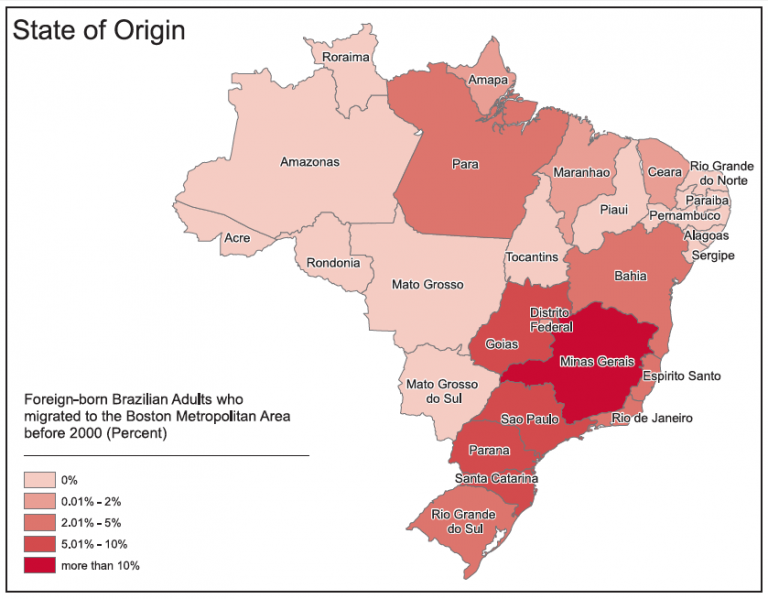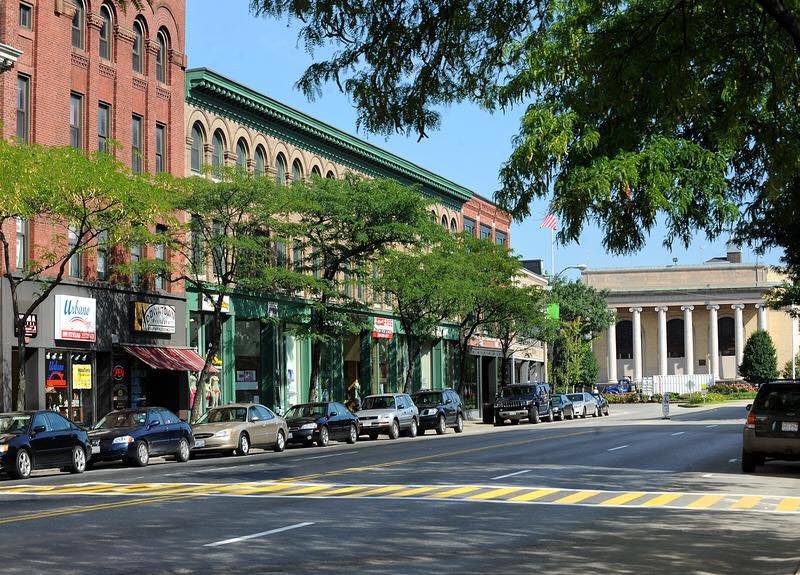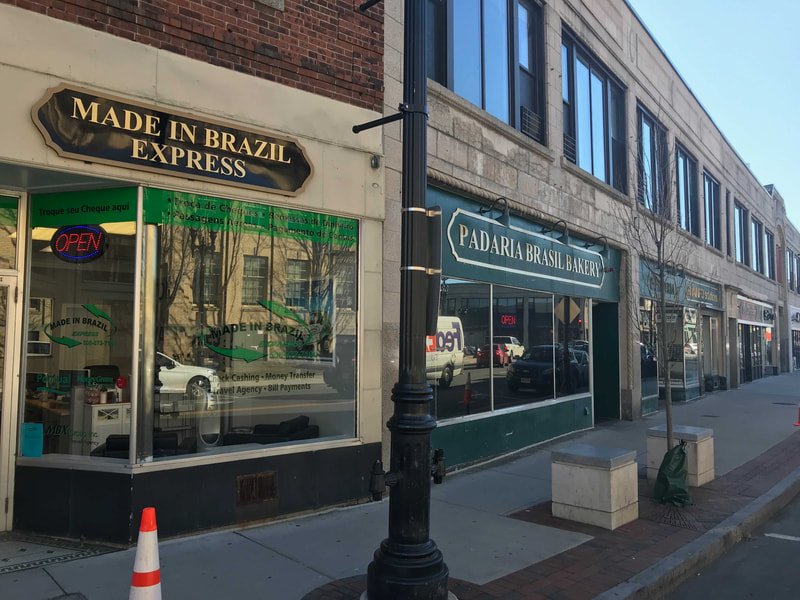Brazilian immigration surged in the late 20th century, transforming cities like Framingham into vibrant cultural hubs for the Brazilian community. Brazilians revitalized neighborhoods by opening thriving businesses, diverse restaurants, and community spaces. They have also become essential contributors to industries such as construction, real estate, and healthcare, supported by a network of nearly 300 churches that provide spiritual and social support.
Estimated population: Approximately 500,000.

An Overview of Brazilian Immigration to Boston
Greater Boston has attracted more Brazilian immigrants than any other major metropolitan area in the United States, partly due to its historic Portuguese-speaking communities that eased the settlement process.
The first Brazilian immigrants began arriving in the 1960s and 1970s, paving the way for a larger migration wave in the mid-1980s. Many of these early arrivals were from Minas Gerais, particularly the city of Governador Valadares. The connection between this region and Massachusetts dates back to World War II when engineers from Boston worked in Minas Gerais on mica mining projects for military equipment. These interactions encouraged cultural exchanges, inspiring Brazilians to seek education and work opportunities in Boston.
In the 1980s, Brazil’s economic crisis, characterized by soaring inflation, currency devaluation, and high debt levels, pushed many Brazilians to look abroad for better job opportunities. Many who arrived in Greater Boston were middle-class with at least a high school education. However, some faced challenges due to arriving too late to qualify for the 1986 amnesty program, resulting in a significant portion of undocumented immigrants.

Communities and Settlement Patterns
Brazilians typically settled in areas with established Portuguese-speaking populations, churches, and community institutions. Initially, neighborhoods such as Somerville, Framingham, and Allston-Brighton hosted the largest Brazilian communities. Over time, cities like Everett, Malden, and Marlborough also saw significant growth in their Brazilian populations.
Framingham became particularly notable, surpassing Boston in its Brazilian population by 2010 and earning recognition as a sister city to Governador Valadares. These communities, often located in older industrial areas, benefited from the influx of Brazilian immigrants who purchased homes and launched small businesses, revitalizing commercial districts in places like downtown Framingham and Everett.

Employment and Entrepreneurship
The Brazilian community in Greater Boston has primarily been concentrated in construction and service industries. Brazilian men have carved out niches in home construction and landscaping, while women often work in residential cleaning services.
For many middle-class, educated Brazilians, entrepreneurship became a way to combat the downward mobility caused by language barriers and unrecognized professional credentials. Family-owned businesses provided opportunities for newly arrived relatives, friends, and undocumented individuals. As these businesses grew, owners often created new routes or subcontracted work to fellow Brazilians, further expanding the local Brazilian business sector.



